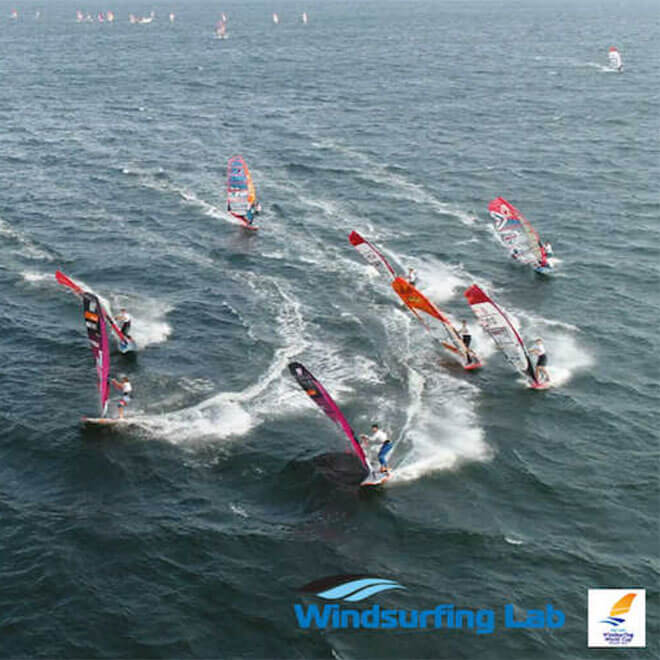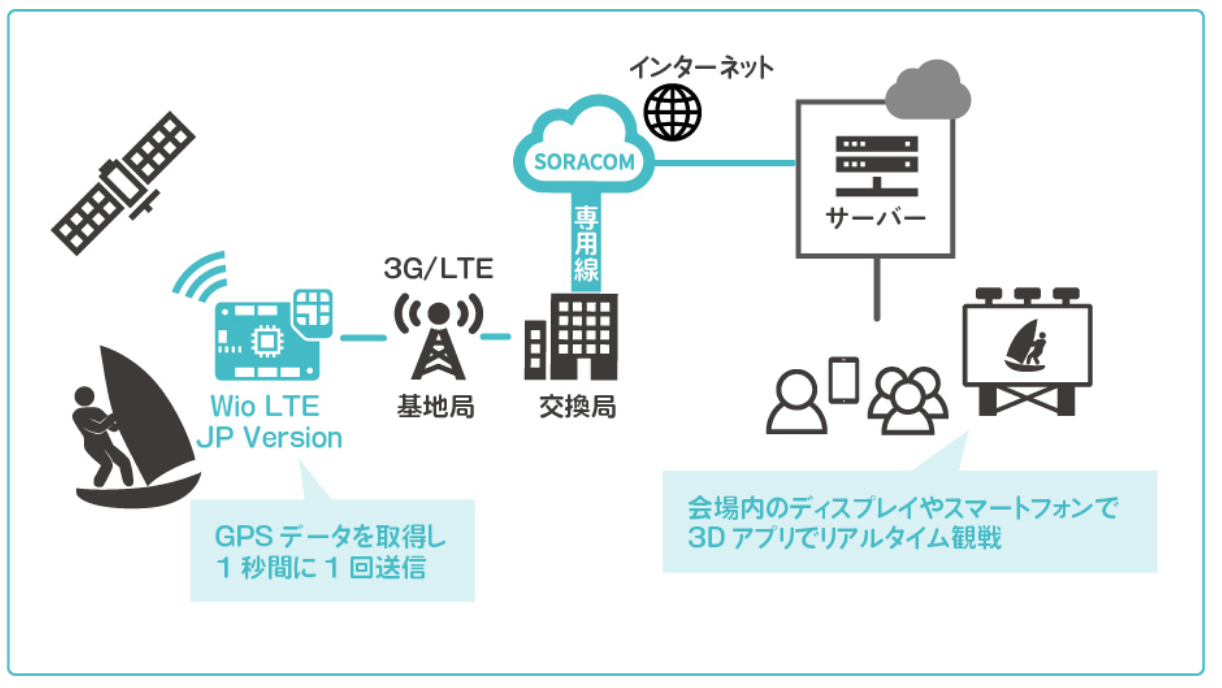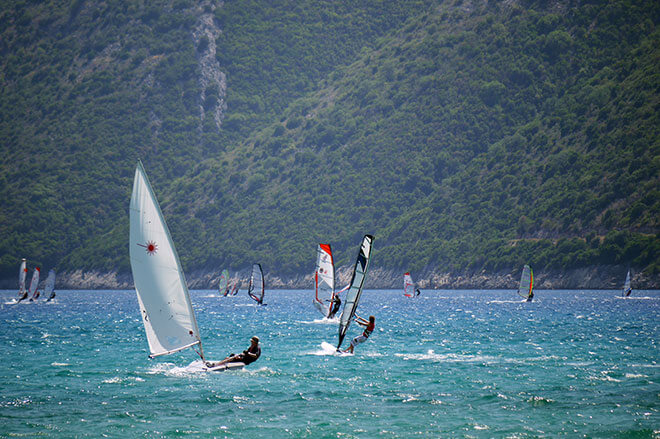Watching windsurfing with IoT technology
N-Sports Tracking Lab uses IoT technology to visualize windsurfing races
ABOUT
Enabling spectators to watch windsurfing competitions
Windsurfing is a water sport that involves individuals riding a sailboard that is propelled by wind power. Some call it “Sea F-1” because of the high speeds that the sailboards can reach, comparable to Formula One racing.
Over the last decade, the sport of windsurfing has grown tremendously around the world, with events like the Professional Windsurfers Association’s (PWA) Windsurfing World Cup featuring competitors from over 10 countries around Western Europe.
The high speed and intense competition of these exciting windsurfing races are thrilling to view for spectators, however, since these events are often held over 500 km offshore, it’s virtually impossible to watch the action with the naked eye.
To solve this problem, N-Sports Tracking Lab LLC. is using IoT technology to visualize these “invisible races.”

CHALLENGE
Collecting this data from each individual racer in real time
N-Sports Tracking Lab needed to build an IoT system that allowed spectators to watch these offshore windsurfing events in a short period of about 2 months. However, they didn’t stop there.
Windsurfing competitors often choose different routes depending on factors like wind direction and weather among others.
N-Sports wanted spectators to feel the speed of each windsurfing race, and believed that being able to share statistics collected from each individual racer could provide a better viewing experience for spectators, while growing the sport even further.
One challenge that N-Sports faced was collecting this data from each individual racer in real time so spectators could monitor the race.
This was also important for race managers who wanted to know the specific location of each racer in real time in case they veered off-course and needed to be rescued.
In addition, N-Sports needed to find a solution that was cost-effective. Using over a hundred 100 3G/LTE module-equipped sensors for a few days of competition could end up being expensive.
Lastly, the schedule of the project was tight. N-Sports Tracking Lab received official permission from the PWA Windsurfing World Cup with limited time to construct an IoT system.
SOLUTION
N-Sports Tracking Lab visualized these “invisible races” by preparing 130 IoT-connected devices for the competition, each with a microcomputer and sensor manually soldered and placed within a plastic case. Each IoT sensor is capable of streaming data continuously for 14 hours with a 3500 mA mobile battery.
These IoT-connected devices were originally planned to be installed in the sail, but in some cases, attachment to the sail wound up providing inaccurate competition results. This led to the IoT sensors being placed in windsurfers’ waist pouches.
N-Sports needed a compact 3G/LTE module-equipped sensor that could help them successfully accomplish their goal of visualizing these windsurfing competitions.
They chose to power their IoT project with Soracom’s Wio LTE, as it provided them with a cost-effective way to track each windsurfer’s stats in real time.
Once each IoT-connected device was installed with a Soracom Air SIM card, data from each windsurfer was collected and transferred to the cloud using Soracom cellular connectivity.
N-Sports Tracking Lab finished verification in 2 months, just in time for the windsurfing competition.
WHY SORACOM
Soracom’s Wio LTE JP Version allowed N-Sports Tracking Labto collect and send data related to sail movement and player position once every second, allowing spectators to view each windsurfer’s position, direction and speed.
In addition, Soracom helped facilitate N-Sports’ need for rapid development, providing an IoT connectivity solution that enabled them to meet their tight deadlines. This led N-Sports to successfully visualize these windsurfing events, satisfying the Association as well as the many fans of the sport.
SYSTEM CONFIGURATION


FUTURE DEVELOPMENTS
N-Sports plans on expanding their application globally using Soracom AIR SIM cards, which provide their system with cellular connectivity that they can use overseas.
They believe this IoT system can be applied to not only windsurfing, but to any races that are on both land or water, providing more fans of popular sports all over the world with a better way to watch competitions.
N-Sports Tracking Lab is developing new IoT functions for next year’s windsurfing events. In addition to a windsurfer’s location, they are hoping to better monitor other components, such as the movement of each windsurfer’s sail.
In addition, N-Sports is working on providing new data-based insights to spectators as well as to the windsurfing athletes themselves.
